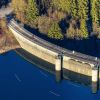Energy transition partners
Climate change cannot be tackled alone. Germany is cooperating with these partners in the field of hydrogen research

New Zealand
In the summer of 2022, three German-New Zealand collaborative research projects in the field of green hydrogen were launched. They are exploring how to generate, store and transport the gas as an energy source. The HighHy project is working on AEM (anion exchange membrane) electrolysis, which does not require expensive and hard-to-get precious metals but is less efficient than other methods. The objective of the cooperation between Fraunhofer-Gesellschaft, the University of Bayreuth and the universities of Canterbury, Auckland and Wellington is to develop highly efficient catalysts made of nickel. A partner project of Helmholtz-Zentrum Hereon and the University of Otago (NZMat4H2Sto) is researching the extent to which titanium-iron alloys could be used to store hydrogen. And the German Aerospace Center (DLR) is collaborating with the universities of Canterbury and Auckland within the framework of the HINT project to discover how large quantities of green hydrogen can be generated cost-effectively and integrated into systems in Germany and New Zealand. All three consortia will be supported with a total of 1.2 million euros in funding from Germany’s Federal Ministry of Education and Research (BMBF) until 2025.
Australia
Australia is regarded as an important partner for Germany when it comes to manufacturing and using green hydrogen. The gas produced in this sunny continent could be transported to Germany by ship. Since late 2020, experts in the domains of science and business have been examining whether such a supply chain could be set up – and their conclusions have been positive so far. The study, supported by the BMBF to the tune of 1.7 million euros, is being jointly coordinated by acatech – National Academy of Science and Engineering and the Federation of German Industries (BDI), and on the Australian side by the University of New South Wales. In February 2022, the BMBF launched the HyGATE (German-Australian Hydrogen Innovation and Technology Incubator) project in cooperation with the Australian Renewable Energy Agency (ARENA). Besides the question of hydrogen imports, its focus is also on exporting German climate protection technology.
Canada
Since October 2022, Germany and Canada have been collaborating on green hydrogen research in a variety of projects, the BMBF providing a total of 2.5 million euros in funding for four joint projects. One area of focus is how to produce hydrogen more efficiently and cheaply. Within the framework of the bilateral funding measure, run together with the Natural Sciences and Engineering Research Council (NSERC), ten projects aimed at strengthening German-Canadian networks in hydrogen research have already been supported since 2020. One particular feature of this German-Canadian cooperation is the involvement of small and medium-sized enterprises from both countries. “One of the objectives is to establish a transatlantic supply chain for green hydrogen,” reports the BMBF, talking about the hydrogen agreement that was signed in August 2022. The first shipments from Canada to Germany are to begin from 2025. The two countries are linked by a 50-year partnership in the field of research into future technologies.
You would like to receive regular information about Germany? Subscribe here:


